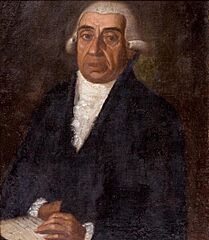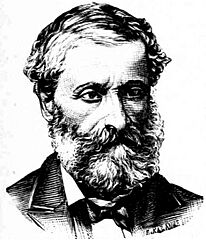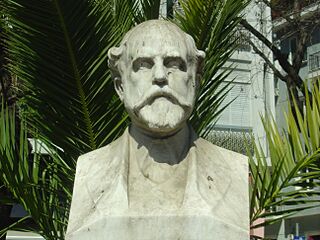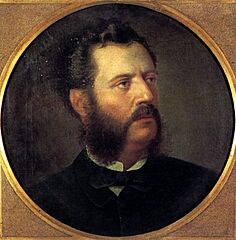Ionian school (literature) facts for kids
The Heptanese school of literature was a group of writers from the Ionian Islands (also known as the Seven Islands). They created books, poems, and plays from the late 1700s to the late 1800s. This important time in Greek literature is also called the Ionian school.
A very important writer in this group was the poet Dionysios Solomos. Because he was so influential, the time periods of this school are often named after him. There were writers who came before Solomos, writers who lived during his time, and writers who came after him.
Contents
What Made the Heptanese School Special?
The writers of the Heptanese school had some common ideas and styles. These made their works unique:
- They mostly used a simpler, everyday form of the Greek language called Dimotiki. This was different from the older, more formal language called Katharevousa.
- They were inspired by Italian writers of their time. This influence helped them write about real-life scenes and events.
- They deeply loved their homeland, Greece.
- They had a strong appreciation for nature and its beauty.
- Their writing often showed a "romantic impulse." This means they focused on feelings, imagination, and individual experiences.
- They believed strongly in the importance of love and freedom.
- They valued the role of religion in people's lives.
Important Writers of the Heptanese School
Many talented writers were part of this school. Here are some of the most well-known:
- Mikelis Avlichos
- Andreas Kalvos
- Andreas Laskaratos
- Antonios Martelaos
- Gerasimos Markoras
- Antonios Matesis
- Lorentzos Mavilis
- Iakovos Polylas
- Dionysios Solomos
- Georgios Tertsetis
- Aristotelis Valaoritis
- Ioannis Zambelios
Famous Works from the Heptanese School
These writers created many important works. Some of them are still famous today:
- Hymn to Liberty (1823) by Dionysios Solomos. This poem later became the national anthem of Greece.
- The Free Besieged by Solomos.
- Vasilikos (1859), a play by Antonios Matesis.
- The mysteries of Cephalonia (1872) by Andreas Laskaratos.
- Idou o anthropos (1886) by Andreas Laskaratos.
Images for kids





